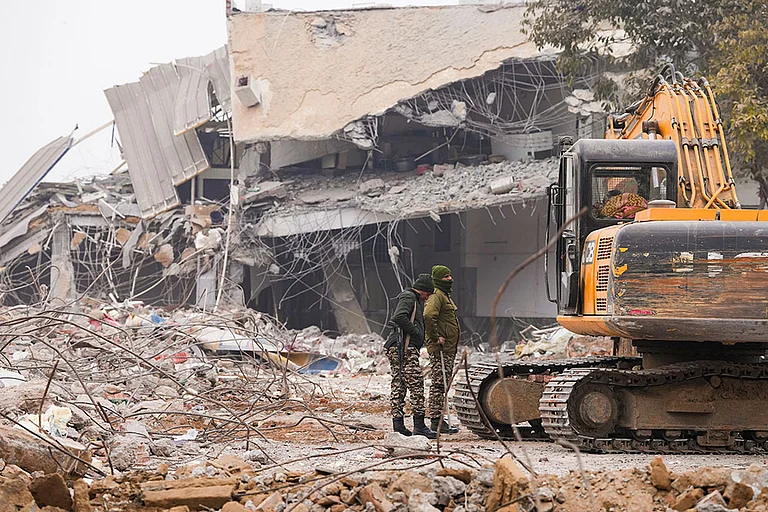Uttarakhand BJP spokesperson Shadab Shams was heard saying that Char Dham Yatra pilgrims were hiding health issues and undertaking the difficult journey in the belief that they would attain "moksha" even if something happened to them.
As the video created a controversy, Uttarakhand Congress leaders demanded an apology from Shams and accused him of hurting religious sentiments. They claimed that the comment was an attempt to hide the government’s mismanagement of the Yatra.
The controversy has come in the wake of 23 deaths among pilgrims since the beginning of this year’s Yatra on May 3.
Here we explain what Char Dham Yatra is, what makes it so risky, and what’s the ongoing controversy over it.
What is Char Dham Yatra?
The Char Dham Yatra is a Hindu pilgrimage of four holy sites of Yamunotri, Gangotri, Kedarnath, and Badrinath.
The four shrines, nestled in the Himalayan heights, remain shut for around six months every year, opening in summers (April or May) and closing with the onset of winter (October or November), according to the Uttarakhand government’s website.
It adds that it is believed that one should complete the Char Dham Yatra in a clockwise direction – starting from Yamunotri, proceeding towards Gangotri, onto Kedarnath, and finally ending at Badrinath.
Hilly terrain makes trek difficult
The high Himalayas and the rocky terrain can lead to mountain sickness.
An article in The Indian Express notes that the Kedarnath trek is among the riskiest in India. Exhaustion, changing weather conditions, and a drop in oxygen level affect people. It affects people with diabetes and advanced age more.
Dr KS Chauhan, the chief medical officer of Uttarkashi district, told Express, “There is an elevation on these trekking paths and when people keep walking, they do not realise the sudden decrease in oxygen level. People keep moving without enough rest and then complain of dizziness. This is why proper rest after every few kilometres of trek is needed.”
Prakhar Pandey, an engineering student who recently completed the trek, told Express, “The 16 km trek starts there [at Gaurikund]. The lanes are narrow and sometimes, passing horses hurt people. The shortcuts have high elevation and take a heavy toll on the body. In the last 8-10 km, the oxygen level and the temperature drop suddenly. If your body isn’t prepared for it, it could be fatal.”
Heart issues, delayed help behind deaths: Govt
The 23 people who have died since May 3 suffered from heart issues or other comorbidities, as per reports.
The state government has also said that none of the deceased were taken to hospital on time.
Deaths in the Yatra are not, however, uncommon. The Express noted that over 90 pilgrims died in 2019 – the last year in which Yatra took place. In 2017, 112 pilgrims died and 102 died in 2018.
What’s the current controversy?
The BJP spokesperson Shadab Shams said people were hiding their health issues and going ahead with the pilgrimage despite risks it poses.
The Opposition lashed at him and alleged he was not only covering up the state government’s mismanagement, he was also hurting religious sentiment.
Responding to the allegations, Shams said, "The video clip that went viral shows only half-truth, which is more harmful than a lie. When asked by news portals about rising pilgrim deaths on way to the shrines, I quoted officials who had said that mostly the pilgrims with Covid history were dying as they were hiding their complications from the authorities in the belief that even if something happened to them en route to the temples, they would be absolved of their sins and attain moksha."
Irrespective of the controversy, it has been noted that people are indeed proceeding to the pilgrimage without proper health considerations. But the state’s laxity is also involved, as per a report.
The Times of India reported, “With the Uttarakhand government doing away with mandatory medical tests, many pilgrims who may not have been fully fit for undertaking the arduous journey also took to the Yatra, resulting in at least 23 pilgrims dying in just the first 10 days of the Yatra.”
(With PTI inputs)


























